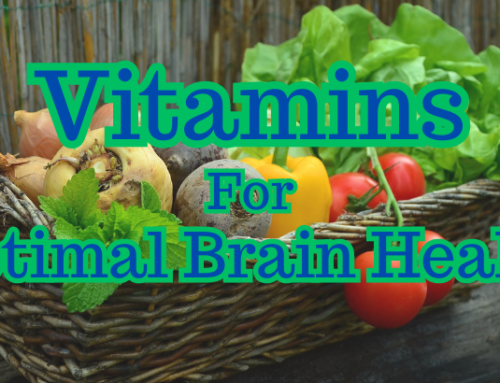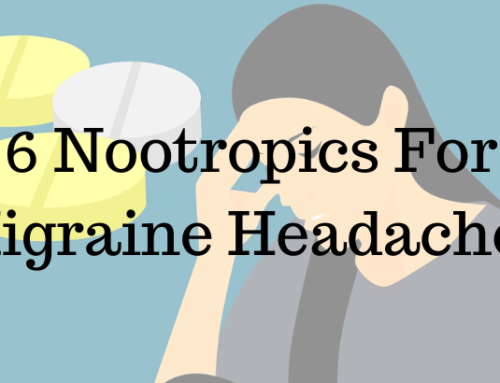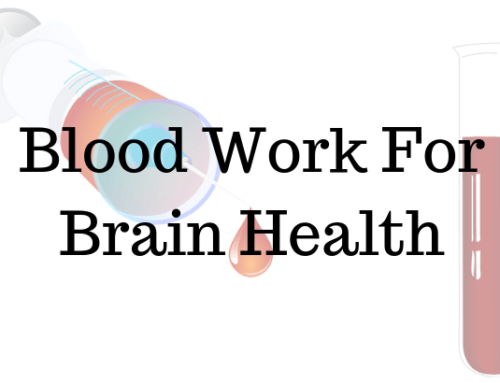Our bodies need vitamins and minerals to function. If we don't get enough, we develop deficiencies. And getting too much of certain vitamins and minerals can be just as dangerous.
In another post, we looked at 13 vitamins that are needed for optimal brain health. In this post, we're going to look at 9 minerals our brains need to function optimally. But first, what exactly are minerals?
What Are Minerals?
Minerals are essential nutrients that our bodies and brains need to function normally. Since they are usually measured in milligrams (mg) or micrograms (mcg), minerals are considered micronutrients. Nutrients that we need in large quantities (proteins, carbohydrates, and fats) are called macronutrients.
All of the minerals our bodies need are elements that can be found on the periodic table. We are not able to produce them ourselves, so we must get them through what we eat and drink. The five major minerals we need are calcium, magnesium, sodium, potassium, and phosphorus. All of the others are called trace elements since we only need small quantities of them.
Minerals For Optimal Brain Health
Calcium
This mineral plays a number of important roles in the human body and brain. Calcium is needed for proper muscle, digestive, and heart health, to build bone, to create blood cells, and for proper nervous system function.1

Dairy is high in calcium.
In the brain and the rest of the central nervous system, calcium helps cells to communicate with each other.2 It lets neurons (nerve cells) know when it's time to release certain neurotransmitters, chemicals that send messages throughout the body and brain.
Calcium can be found in a number of foods including dairy products, green leafy vegetables, nuts, seeds, eggs, and fish. Hypocalcemia is the name for calcium deficiency and can cause muscle spasms, seizures, numbness, confusion, and even cardiac arrest. Too much calcium is called hypercalcemia and can cause weakness, depression, confusion, kidney stones, abdominal pain, and heart problems.3
Potassium

Bananas are high in potassium.
Potassium is a mineral that plays several roles in the body and brain. It is essential for proper fluid and electrolyte balance.4 And like calcium, potassium helps neurons to communicate with each other.
Potassium can be found in a variety of foods including potatoes, tomatoes, beans, lentils, seafood, dairy products, sweet potatoes, bananas, prunes, oranges, and carrots. Not getting enough potassium can result in hypokalemia, another name for potassium deficiency. Symptoms can include fatigue, weakness, leg cramps, constipation, and abnormal hearth rhythms.3 Interestingly, the symptoms of hyperkalemia or excessive potassium are very similar.
Low potassium levels are associated with high blood pressure and heart problems.5 To maintain healthy blood pressure, it's important to keep potassium levels balanced with the next mineral: sodium.
Sodium
 This mineral plays a crucial role in maintaining healthy blood pressure. Along with potassium, sodium helps the body to regulate this important vital sign. Sodium also plays a role in how neurons communicate, although in a less direct manner than calcium.6
This mineral plays a crucial role in maintaining healthy blood pressure. Along with potassium, sodium helps the body to regulate this important vital sign. Sodium also plays a role in how neurons communicate, although in a less direct manner than calcium.6
The main dietary source of sodium is table salt (NaCl). This abundant seasoning is made up of equal parts sodium (Na) and chlorine (Cl). Sodium can also be found in some foods like milk, spinach, and some other vegetables.
Sodium deficiency is called hyponatremia.7 Symptoms can include headaches, difficulty balancing, nausea, confusion, seizures, and coma. Hyponatremia can actually be brought on by drinking too much water. But you'd have to consume an incredible amount of H2O in a very short period of time to experience any of its symptoms. Having excessive sodium levels is called hypernatremia and can result in twitching, confusion, and bleeding around the brain.
Magnesium

Nuts contain both magnesium and manganese.
This mineral is involved in a number of biochemical reactions in the human body. Magnesium plays a role in protein synthesis, blood glucose levels, blood pressure regulation, and nerve function.8
A variety of foods contain magnesium including nuts, seeds, spinach, legumes, whole grains, avocado, and peanut butter. Magnesium deficiency, also known as hypomagnesemia, can cause muscle spasms, tremor, loss of appetite, personality changes, and nystagmus.3
Excessive magnesium is called hypermagnesemia and symptoms may include confusion, weakness, slowed breathing, and decreased reflexes. However, slightly increasing magnesium intake may actually improve brain function. A 2009 study showed that taking magnesium could enhance learning and memory.9
Manganese

Manganese is essential for strong bones.
This mineral is involved in several biological processes including bone formation, macronutrient metabolism, and defense against free radicals. Manganese – not to be confused with Magnesium – is also important for brain function and plays a role in neurotransmitter release.10
Manganese is found in nuts, seeds, grains, legumes, tea, coffee, and leafy vegetables. Deficiency can cause skeletal deformation, slow the healing of wounds, and may affect mood.11
Manganism is another name for manganese poisoning. This condition – caused by excessive manganese intake – can cause a variety of psychiatric and motor problems resulting in mood changes, irritability, and compulsive behaviors.12
Zinc

Oysters are high in zinc.
This is an trace mineral that is absolutely essential for optimal brain health. Zinc is involved in numerous metabolic processes. It plays a role in immune function, wound healing, protein synthesis, DNA synthesis, cell division, and more.13
Zinc is found in a number of foods including red meat, oysters, poultry, whole grains, nuts, and dairy products. In the brain, zinc plays a key role in learning and synaptic plasticity.14 Maintaining proper zinc levels is crucial for regulating how the central nervous system – including the brain – functions.15
Deficiency can cause a wide variety of symptoms including skin, nail, and hair problems, oral ulcers, swelling of the tongue and mouth, impaired immune function, diarrhea, loss of appetite, depression, behavioral changes, and decreased testosterone production in men.16 Too much zinc, on the other hand, can cause vomiting, nausea, cramps, diarrhea, and decreases the body's ability to absorb iron and copper.17
Iron
 When we think about this mineral, we usually think about blood. That's because iron is an essential component of hemoglobin which is found in red blood cells. But iron also plays a variety of roles in the brain.
When we think about this mineral, we usually think about blood. That's because iron is an essential component of hemoglobin which is found in red blood cells. But iron also plays a variety of roles in the brain.
Iron is absolutely needed for normal brain function because it is involved in oxidative metabolism.18 It's also a cofactor in the creation of several neurotransmitters as well as myelin. These neurotransmitters include serotonin, dopamine, and norepinephrine. They play a role in everything from mood to motivation, anxiety to appetite.
Iron is found in a number of foods including many breakfast cereals, oysters, white beans, dark chocolate, liver, lentils, spinach, and others to a lesser degree.19 Deficiency in this mineral is somewhat common. In fact, iron deficiency is the most common nutritional deficiency in the world.20 Also known as sideropenia, iron deficiency can eventually lead to anemia. This condition can causes weakness, shortness of breath, confusion, increased thirst, and pale skin.
Iodine

Several prescription anti-anxiety drugs affect GABA.
This is an essential trace mineral that serves a number of purposes in the human body. One of iodine's main functions is to create the thyroid hormones triiodothyronine (T3) and thyroxine (T4).21 These hormones are necessary for the body and brain to produce several important neurotransmitters.
One of these neurotransmitters is gamma-aminobutyric acid, better known as GABA. Without proper thyroid function, GABA production could be affected.22 This neurotransmitter is found throughout the body and helps you to relax. Drugs like Valium (diazepam), Xanax (alprazolam), and Ativan (lorazepam) work by binding to GABA (sub)receptors in the brain.
Iodine can be found in seaweed, some fish, yogurt, milk, bread, shrimp, and other foods. Deficiency can cause a variety of problems including low thyroid hormone levels, goiter, and intellectual disability.23
Copper
 This is the last essential element on this list of minerals for optimal brain health. Like the other minerals, copper has a number of important functions in the human body. It is involved in making several neurotransmitters, energy production, connective tissue repair, and neuropeptide activation.24
This is the last essential element on this list of minerals for optimal brain health. Like the other minerals, copper has a number of important functions in the human body. It is involved in making several neurotransmitters, energy production, connective tissue repair, and neuropeptide activation.24
Copper is involved in the production of several neurotransmitters including dopamine. It also helps to create myelin and new blood vessels in the brain.25 Additionally, copper is needed for normal synapse development.26 Synapses are the spaces between nerve cells they use to communicate with each other.
Copper is found in beef, oysters, sesame seeds, baking chocolate, potatoes, cashews, and many other foods. Deficiency is rare in humans. But when it happens symptoms include high cholesterol, anemia, osteoporosis, bone defects, and increased risk of infection.27
Conclusion
As you can see, our bodies and brains need a variety of nutrients to function optimally. Fortunately, the planet provides us with all the vitamins and minerals our bodies need through a vast selection of fruits, vegetables, meats, and other foods. However, sometimes it can be hard to get all of these essential nutrients through food alone.
If you eat between 5-10 fruits and vegetables a day, regularly consume seafood and red meat, and often snack on nuts and seeds, you're probably already getting all the vitamins and minerals you need. But if you're like most people in the US, UK, Canada, and several other developed countries, you could probably benefit from taking a multivitamin everyday.
Multivitamins aren't meant to replace eating a balanced diet. But for those of us who don't always get as much variety in our diets as we probably should, taking a multivitamin ensures that we don't develop any nasty deficiencies. There are lots of multivitamin brands out there to choose from. I've tried a number of different multivitamins over the years and, out of them all, this one is my favorite and the one I buy most often. But do your own research and decide which multivitamin is best for you. Men and women have different dietary needs, so a lot of brands have a separate multivitamin for each. Amazon offers a variety of brands and multivitamins are also sold at lots of brick-and-mortar stores like Target and Walmart.
Have you ever experienced a mineral deficiency? How about multivitamins: do you take one regularly? If so, have you noticed any difference in brain health? Please leave your answers in the comments section at the bottom. And if you haven't already, sign up for the Nootropics Zone newsletter below to learn about dozens of brain-boosting substances.
To learn more about nootropics, sign up for the Nootropics Zone newsletter. You'll get the free gift, The Ultimate Nootropics Quick Reference Guide.
References
1Calcium. (2017). Oregon State University. Linus Pauling Institute: Micronutrient Information Center. Retrieved March 29, 2024 from https://lpi.oregonstate.edu/mic/minerals/calcium
2Sudhof, T. (2012). Calcium control of neurotransmitter release. Cold Spring Harbor Perspectives in Biology, 4(1).
3Soar, J., Perkins, G., Abbas, G., Alfonzo, A., et al. (2010). European resuscitation council guidelines for resuscitation 2010 section 8. Cardiac arrest in special circumstances: electrolyte abnormalities, poisoning, drowning, accidental hypothermia, hyperthermia, asthma, anaphylaxis, cardiac surgery, trauma, pregnancy, electrocution. Resuscitation, 81(10):1400-1433.
4Pohl, H., Wheeler, J., & Murray, H. (2013). Sodium and potassium in health and disease. In: Sigel, A., Sigel, H., Sigel, R. (eds.). Interrelations Between Essential Metal Ions and Human Disease. (pp 29-47). Springer, Dordrecht.
5D'Elia, L., Barba, G., Cappuccio, F., & Strazzullo, P. (2011). Potassium intake, stroke, and cardiovascular disease: a meta-analysis of prospective studies. Journal of the American College of Cardiology, 57(10):1210-1219.
6Potassium: Fact Sheet For Health Professionals. (2019). National Institutes of Health: Office of Dietary Supplements. Retrieved March 29, 2024 from https://ods.od.nih.gov/factsheets/Potassium-HealthProfessional/
7Lee, J., Kilonzo, K., Nistico, A., & Yeates, K. (2014). Management of hyponatremia. Canadian Medical Association Journal, 186(8):281-286.
8Magnesium: Fact Sheet For Health Professionals. (2019). National Institutes of Health: Office of Dietary Supplements. Retrieved March 29, 2024 from https://ods.od.nih.gov/factsheets/Magnesium-HealthProfessional/
9Slutsky, I., Abumaria, N., Wu, L., Zhuo, M., et at. (2009). Enhancement of learning and memory by elevating brain magnesium. Neuron, 65:165-177.
10Takeda, A. (2003). Manganese action in brain function. Brain Research Reviews, 41(1):79-87.
11Manganese: Fact Sheet For Health Professionals. (2009). National Institutes of Health: Office of Dietary Supplements. Retrieved March 29, 2024 from https://ods.od.nih.gov/factsheets/Manganese-HealthProfessional/
12Roth, J. (2006). Homeostatic and toxic mechanisms regulating manganese uptake, retention, and elimination. Biological Research, 39(1):45-57.
13Prasad, A. (1995). Zinc: an overview. Nutrition, 11(1):93-99.
14Nakashima, A., & Dyck, R. (2009). Zinc and cortical plasticity. Brain Research Reviews, 59(2):347-373.
15Bitanihirwe, B., & Cunningham, M. (2009). Zinc: the brain's dark horse. Synapse, 63(11):1029-1049.
16Prasad, A. (2012). Discovery of human zinc deficiency: 50 years later. Journal of Trace Elements in Medicine and Biology, 26(2-3):66-69.
17Fosmire, G. (1990). Zinc toxicity. American Journal of Clinical Nutrition, 51(2):225-227.
18Pinero, D., & Connor, J. (2000). Iron in the brain: an important contributor in normal and diseased states. The Neuroscientist, 6(6):435-453.
19Iron: Fact Sheet For Health Professionals. (2019). National Institutes of Health: Office of Dietary Supplements. Retrieved March 29, 2024 from https://ods.od.nih.gov/factsheets/Iron-HealthProfessional/
20Centers for Disease Control and Prevention. (2002). Iron deficiency – United States, 1999-2000. Morbidity and Mortality Weekly Report, 51(40):897-899.
21Iodine: Fact Sheet For Health Professionals. (2019). National Institutes of Health: Office of Dietary Supplements. Retrieved March 29, 2024 from https://ods.od.nih.gov/factsheets/Iodine-HealthProfessional/
22Wiens, S., & Trudeau, V. (2006). Thyroid hormone and gamma-aminobutyric acid (GABA) interactions in neuroendocrine systems. Comparative Biochemistry and Physiology, 144(3):332-344.
23Zimmermann, M. (2009). Iodine deficiency. Endocrine Reviews, 30(4):376-408.
24Copper: Fact Sheet For Health Professionals. (2019). National Institutes of Health: Office of Dietary Supplements. Retrieved March 29, 2024 from https://ods.od.nih.gov/factsheets/Copper-HealthProfessional/
25Turnlund, J. (1998). Human whole-body copper metabolism. American Journal of Clinical Nutrition, 67(5):960S-964S.
26Dodani, S., Firl, A., Chan, J., Nam, C., Aron, A., Onak, C., et al. (2014). Copper is an endogenous modulator of neural circuit spontaneous activity. Proceedings of the National Academy of Sciences of the United States of America, 111(46):16280-16285.
27Prohaska, J. (2014). Impact of copper deficiency in humans. Annals of the New York Academy of Science, 1314(1):1-5.
[This article was originally published on August 2, 2019. Updated March 29, 2024.]







Leave a Reply